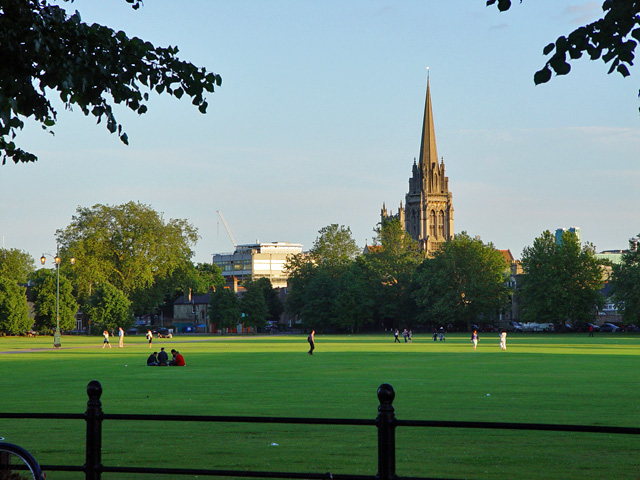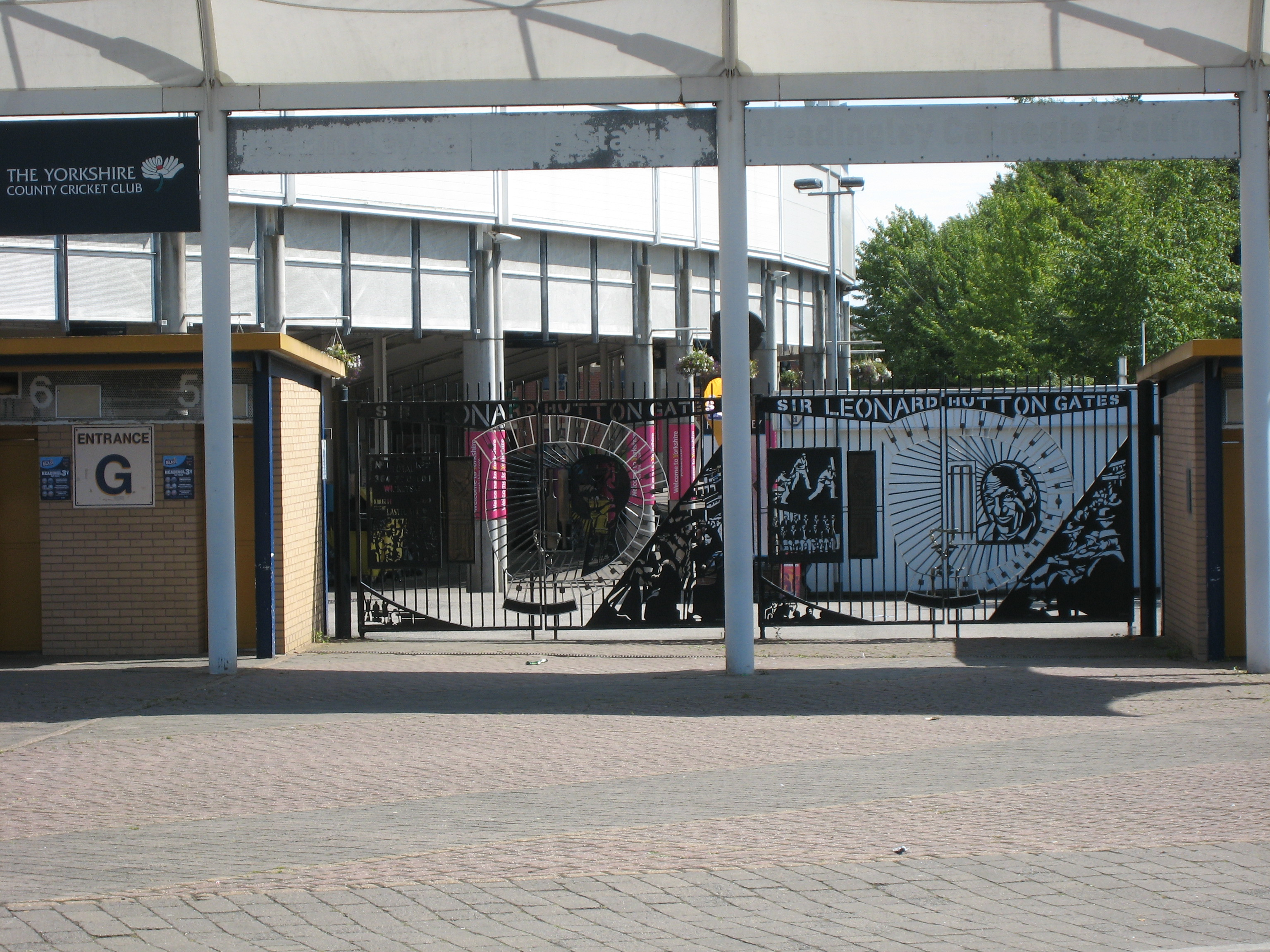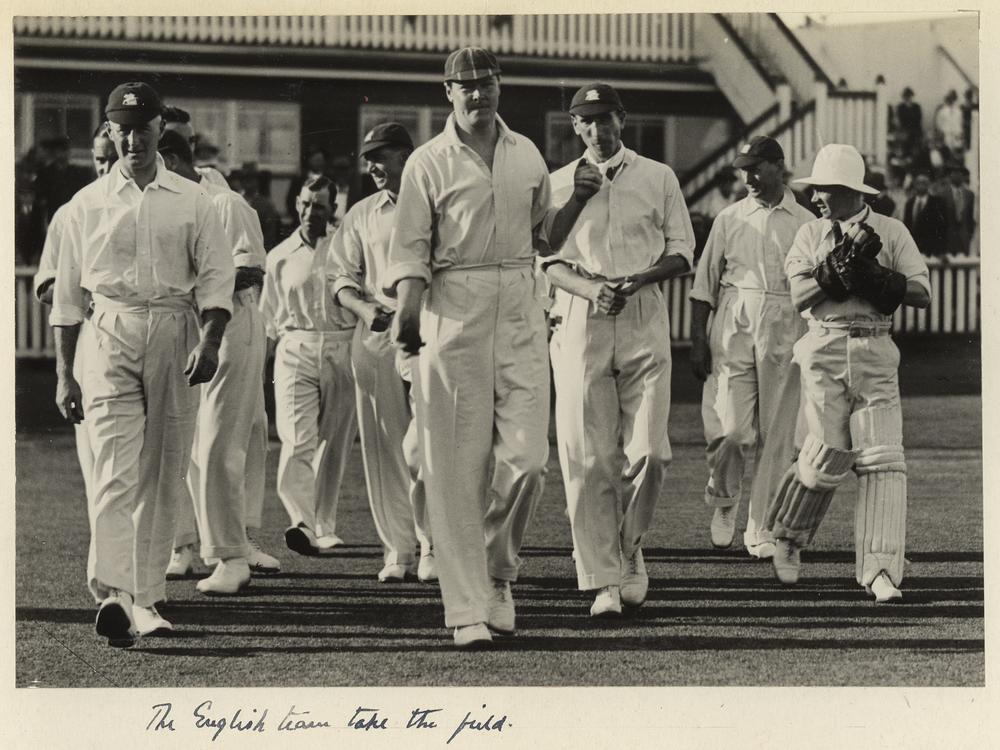|
Herbert Sutcliffe
Herbert Sutcliffe (24 November 1894 – 22 January 1978) was an English professional cricketer who represented Yorkshire and England as an opening batsman. Apart from one match in 1945, his first-class career spanned the period between the two world wars. His first-class debut was delayed by the First World War until 1919 and his career was effectively terminated in August 1939 when he was called up for military service in the imminent Second World War. He was the first cricketer to score 16 centuries in Test match cricket.He is most famous for being the partner of Jack Hobbs and the partnership between the two,Hobbs and Sutcliffe is widely regarded as the greatest partnership of all time. A right-handed batsman, Sutcliffe was noted for his concentration and determination, qualities which made him invaluable to his teams in adverse batting conditions; and he is remembered as one of the game's finest "bad wicket batsmen". His fame rests mainly in the great opening partnership ... [...More Info...] [...Related Items...] OR: [Wikipedia] [Google] [Baidu] |
Summerbridge, North Yorkshire
Summerbridge is a village in Nidderdale in Harrogate district, North Yorkshire, England. It is on the River Nidd, adjacent to Dacre Banks on the opposite bank of the river, and lies about south east of Pateley Bridge. The village is part of the historic West Riding of Yorkshire. The village has one public house, the Flying Dutchman, owned and operated by Samuel Smiths Old Brewery, tea rooms and several other shops (a post office, a general store, a large hardware store). Other businesses include a sawmill and a garage, and there are several more businesses on a small industrial estate at New York, sometimes considered part of Summerbridge. There is also a large Methodist church, a primary school and a retained fire station. Summerbridge is served by two-hourly buses of Harrogate Bus Company (route 24) between Harrogate and Pateley Bridge. The village is the largest settlement in the civil parish of Hartwith cum Winsley. It is the nearest village to Brimham Rocks Brim ... [...More Info...] [...Related Items...] OR: [Wikipedia] [Google] [Baidu] |
Jack Hobbs
Sir John Berry Hobbs (16 December 1882– 21 December 1963), always known as Jack Hobbs, was an English professional cricketer who played for Surrey from 1905 to 1934 and for England in 61 Test matches between 1908 and 1930. Known as "The Master", he is widely regarded as one of the greatest batsmen in the history of cricket. He is the leading run-scorer and century-maker in first-class cricket, with 61,237 runs and 197 centuries. A right-handed batsman and an occasional right-arm medium pace bowler, Hobbs also excelled as a fielder, particularly in the position of cover point. Hobbs was named as one of the five ''Wisden'' Cricketers of the Century alongside Sir Donald Bradman, Sir Garfield Sobers, Shane Warne, and Sir Viv Richards. Born into poverty in 1882, Hobbs wished from an early age to pursue a career in cricket. His early batting was undistinguished, but a sudden improvement in 1901 brought him to the attention of local teams. In 1903, he successfully applied to jo ... [...More Info...] [...Related Items...] OR: [Wikipedia] [Google] [Baidu] |
International Cricket Conference
The International Cricket Council (ICC) is the world governing body of cricket. It was founded as the ''Imperial Cricket Conference'' in 1909 by representatives from Australia, England and South Africa. It was renamed as the ''International Cricket Conference'' in 1965, and took up its current name in 1987. The ICC has its headquarters in Dubai, UAE. The ICC has 105 member nations currently: 12 Full Members that play Test matches, and 94 Associate Members. The ICC is responsible for the organisation and governance of cricket's major international tournaments, most notably the Cricket World Cup and the T20 World Cup. It also appoints the umpires and referees that officiate at all sanctioned Test matches, One Day Internationals and Twenty20 Internationals. It promulgates the ICC Code of Conduct, which sets professional standards of discipline for international cricket, and also co-ordinates action against corruption and match-fixing through its Anti-Corruption and Security ... [...More Info...] [...Related Items...] OR: [Wikipedia] [Google] [Baidu] |
Headingley Cricket Ground
Headingley Cricket Ground is a cricket ground in the Headingley Stadium complex in Headingley, Leeds, England. It adjoins the Headingley Rugby Stadium through a shared main stand, although the main entrance to the cricket ground is at the opposite Kirkstall Lane end. It has hosted Test cricket since 1899 and has a capacity of 18,350. History A sports ground at Headingley was developed by a group of benefactors lead by Lord Hawke who was instrumental in the establishment of Yorkshire County Cricket Club; initially the ground was intended to be used for six sports; cricket, rugby, football, tennis, bowls and cycling. The first recorded first class cricket match took place at Headingley in September 1890. Prior to 1890 Yorkshire played matches around the county with the initial headquarters being at Bramall Lane in Sheffield. Yorkshire continued to use Bramall Lane as a secondary ground until 1973. In 1903 Yorkshire moved their base to Headingley. The mainstand shared betwee ... [...More Info...] [...Related Items...] OR: [Wikipedia] [Google] [Baidu] |
Leeds
Leeds () is a city and the administrative centre of the City of Leeds district in West Yorkshire, England. It is built around the River Aire and is in the eastern foothills of the Pennines. It is also the third-largest settlement (by population) in England, after London and Birmingham. The city was a small manorial borough in the 13th century and a market town in the 16th century. It expanded by becoming a major production centre, including of carbonated water where it was invented in the 1760s, and trading centre (mainly with wool) for the 17th and 18th centuries. It was a major mill town during the Industrial Revolution. It was also known for its flax industry, iron foundries, engineering and printing, as well as shopping, with several surviving Victorian era arcades, such as Kirkgate Market. City status was awarded in 1893, a populous urban centre formed in the following century which absorbed surrounding villages and overtook the nearby York population. It is locate ... [...More Info...] [...Related Items...] OR: [Wikipedia] [Google] [Baidu] |
George Headley
George Alphonso Headley OD, MBE (30 May 1909 – 30 November 1983) was a West Indian cricketer who played 22 Test matches, mostly before World War II. Considered one of the best batsmen to play for the West Indies and one of the greatest cricketers of all time, Headley also represented Jamaica and played professional club cricket in England. West Indies had a weak cricket team through most of Headley's playing career; as their one world-class player, he carried a heavy responsibility and the side depended on his batting. He batted at number three, scoring 2,190 runs in Tests at an average of 60.83, and 9,921 runs in all first-class matches at an average of 69.86. He was chosen as one of the Wisden Cricketers of the Year in 1934. Headley was born in Panama but raised in Jamaica, where he quickly established a cricketing reputation as a batsman. He soon gained his place in the Jamaican cricket team, and narrowly missed selection for the West Indies tour of England in 1928. He m ... [...More Info...] [...Related Items...] OR: [Wikipedia] [Google] [Baidu] |
Graeme Pollock
Robert Graeme Pollock (born 27 February 1944) is a former cricketer for South Africa, Transvaal and Eastern Province. A member of a famous cricketing family, Pollock is widely regarded as one of South Africa's greatest ever cricketers, and as one of the finest batsmen to have played Test cricket. Despite Pollock's international career being cut short at the age of 26 by the sporting boycott of South Africa, and all but one of his 23 Test matches being against England and Australia, the leading cricket nations of the day, he broke a number of records. His completed career Test match batting average (twenty innings minimum) of 60.97 remains the third best behind Sir Don Bradman and Adam Voges. Pollock has been the recipient of numerous awards and accolades, including being voted in 1999 as South Africa's ''Cricketer of the 20th Century'', one of Wisden's Cricketers of the Year in 1966, as well as being retrospectively selected in 2007 as the Wisden Leading Cricketer in the World ... [...More Info...] [...Related Items...] OR: [Wikipedia] [Google] [Baidu] |
Adam Voges
Adam Charles Voges (, born 4 October 1979) is an Australian cricket coach and former cricketer who played for the Australian national team at Test, One Day International (ODI), and Twenty20 International (T20I) level, and also captained Western Australia and Perth Scorchers in domestic cricket. Voges' Test match batting average of 61.87 is second behind Don Bradman among batsmen who have finished their career and played a minimum of 20 innings. Voges was included in the 2016 ICC Test Match Team of the Year. From Perth, Western Australia, Voges excelled at cricket from an early age, attending the Western Australian Institute of Sport and playing for the Australian under-19 team. He made his first-class debut for Western Australia in the 2002–03 Sheffield Shield, and had established himself in the side by the middle of the decade, playing as a middle-order batsman and part-time left-arm orthodox bowler. Voges debuted for Australia during the 2006–07 Chappell–Hadlee Trop ... [...More Info...] [...Related Items...] OR: [Wikipedia] [Google] [Baidu] |
Don Bradman
Sir Donald George Bradman, (27 August 1908 – 25 February 2001), nicknamed "The Don", was an Australian international cricketer, widely acknowledged as the greatest batsman of all time. Bradman's career Test batting average of 99.94 has been cited as the greatest achievement by any sportsman in any major sport. The story that the young Bradman practised alone with a cricket stump and a golf ball is part of Australian folklore. His meteoric rise from bush cricket to the Australian Test team took just over two years. Before his 22nd birthday, he had set many records for top scoring, some of which still stand, and became Australia's sporting idol at the height of the Great Depression. During a 20-year playing career, Bradman consistently scored at a level that made him, in the words of former Australia captain Bill Woodfull, "worth three batsmen to Australia". A controversial set of tactics, known as Bodyline, was specially devised by the England team to curb his scoring. As ... [...More Info...] [...Related Items...] OR: [Wikipedia] [Google] [Baidu] |
Batting Average (cricket)
In cricket, a player's batting average is the total number of runs they have scored divided by the number of times they have been out, usually given to two decimal places. Since the number of runs a player scores and how often they get out are primarily measures of their own playing ability, and largely independent of their teammates, batting average is a good metric for an individual player's skill as a batter (although the practice of drawing comparisons between players on this basis is not without criticism). The number is also simple to interpret intuitively. If all the batter's innings were completed (i.e. they were out every innings), this is the average number of runs they score per innings. If they did not complete all their innings (i.e. some innings they finished not out), this number is an estimate of the unknown average number of runs they score per innings. Each player normally has several batting averages, with a different figure calculated for each type of match ... [...More Info...] [...Related Items...] OR: [Wikipedia] [Google] [Baidu] |
Douglas Jardine
Douglas Robert Jardine ( 1900 – 1958) was an English cricketer who played 22 Test matches for England, captaining the side in 15 of those matches between 1931 and 1934. A right-handed batsman, he is best known for captaining the English team during the 1932–33 Ashes tour of Australia. During that series, England employed "Bodyline" tactics against the Australian batsmen, headed by Donald Bradman, wherein bowlers pitched the ball short on the line of leg stump to rise towards the bodies of the batsmen in a manner that most contemporary players and critics viewed as intimidatory and physically dangerous. As captain, Jardine was the person responsible for the implementation of Bodyline. A controversial figure among cricketers, partially for what was perceived by some to be an arrogant and patrician manner, he was well known for his dislike of Australian players and crowds, and thus was unpopular in Australia, especially so after the Bodyline tour. However, many who play ... [...More Info...] [...Related Items...] OR: [Wikipedia] [Google] [Baidu] |
Bodyline
Bodyline, also known as fast leg theory bowling, was a cricketing tactic devised by the English cricket team for their 1932–33 Ashes tour of Australia. It was designed to combat the extraordinary batting skill of Australia's leading batsman, Don Bradman. A bodyline delivery was one in which the cricket ball was bowled, at pace, at the body of the batsman in the expectation that when he defended himself with his bat a resulting deflection could be caught by one of several fielders standing close by on the leg side. Critics of the tactic considered it intimidating and physically threatening in a game that was traditionally supposed to uphold conventions of sportsmanship. The England team's use of the tactic was perceived by some, both in Australia and England, as overly aggressive or even unfair, and caused controversy that rose to such a level that it threatened diplomatic relations between the two countries before the situation was calmed.Frith, pp. 241–59. Although no ... [...More Info...] [...Related Items...] OR: [Wikipedia] [Google] [Baidu] |



.jpg)






